Vibro Stone Column & Vibro Displacement Column
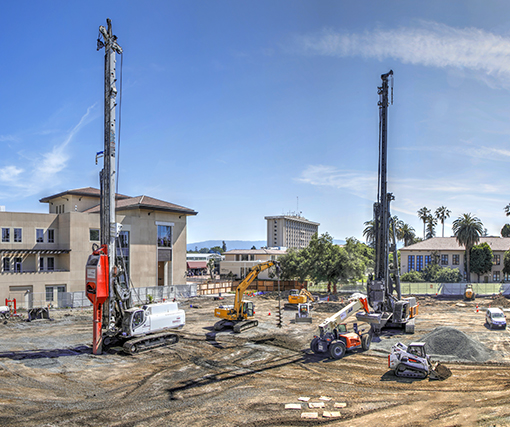
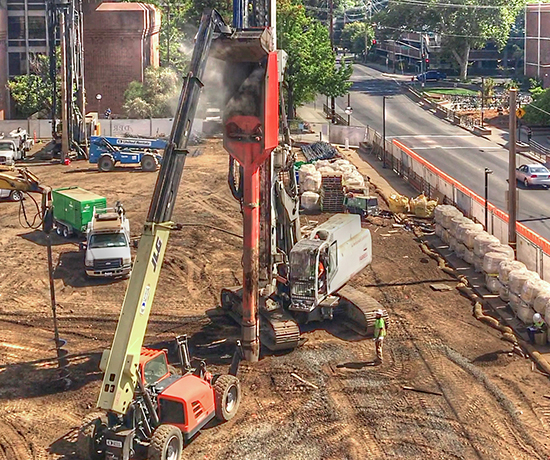
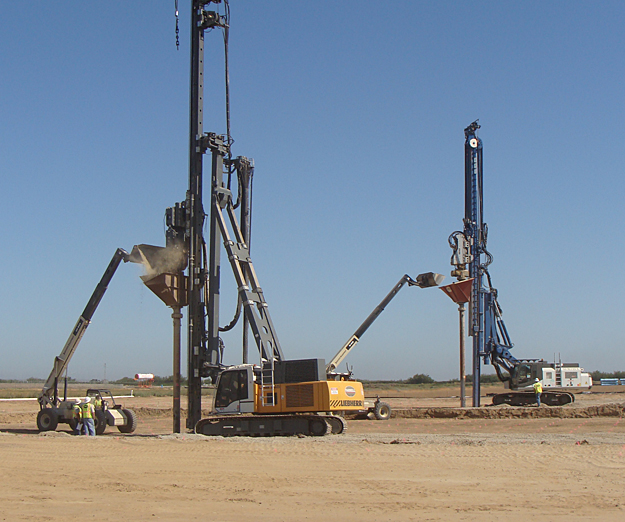
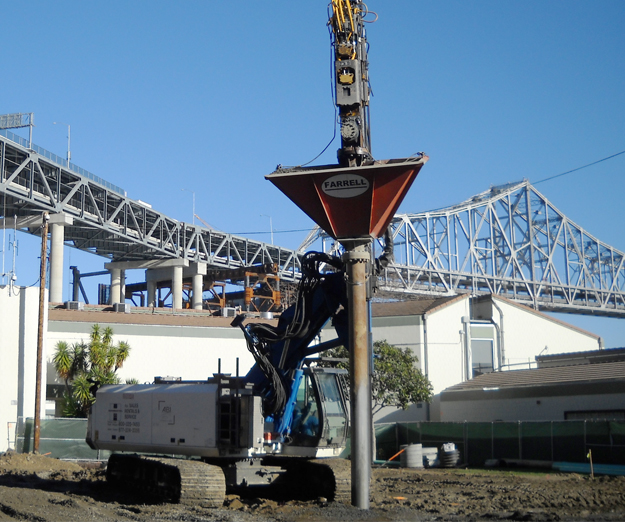
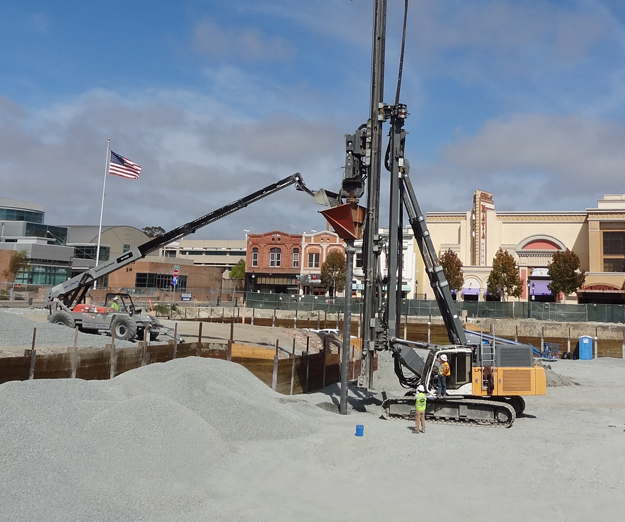
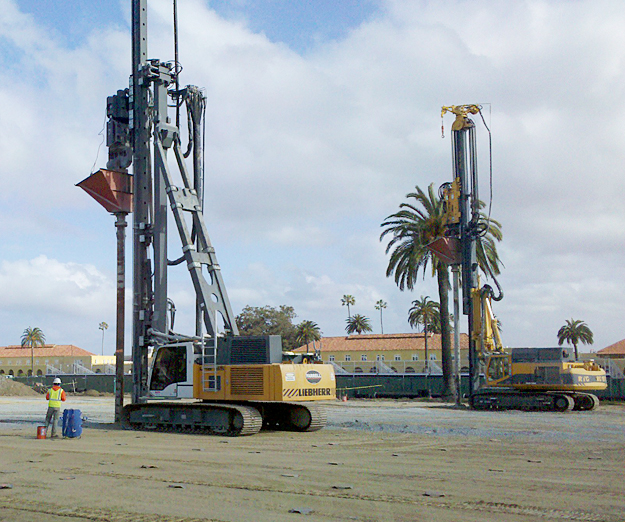
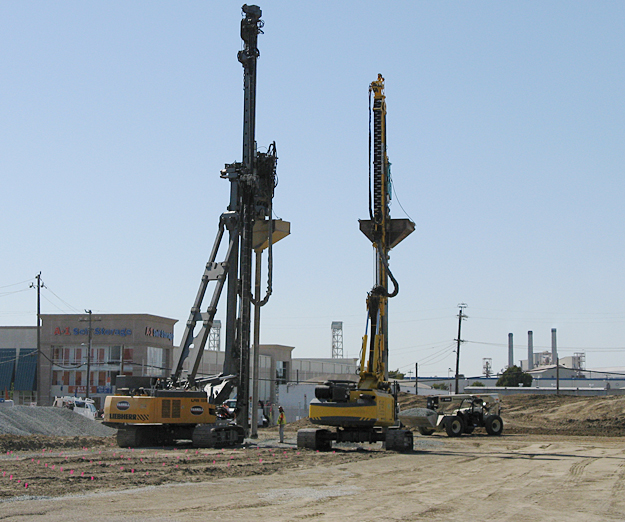
Overview
Vibro Stone Column and Vibro Displacement Column (VSC and VDC) are soil-displacement, sand, aggregate, soil cement, and grout column ground improvement methods commonly called vibro compaction and vibro replacement. VSC/VDC use dynamic, vibratory energy and displacement technology to construct strong, engineered, “composite ground” for support of slabs and foundations and to reduce liquefaction settlement. Vibroflot and vibrolance compactors are used for VSC and vibro-rod compactors for VDC. The compaction produces cavity expansion effects that increase soil density, increase soil strength and stiffness, increase bearing capacity, reduce soil compressibility, and increase soil shear strength. VSC/VDC use both top-feed and bottom-feed construction methods. VSC/VDC are commonly spaced on equilateral triangular grids below the site for liquefaction mitigation. This creates overlapping improvement zones of composite ground. VSC/VDC composite ground resists liquefaction settlement and supports heavy loads on conventional foundations, slabs, and mats with reduced settlement.
VSC/VDC Applications
Slabs, structural mats, MSE walls, embankments, and industrial foundations. The ideal applications for VSC/VDC:
- Loose sand and silt sites with high ground water.
- Liquefiable and loose sand sites with seismic settlement.
- Sites that require gravel drains.
- Sites where vibratory ground improvement will be effective.
- Contaminated sites.
- Fill sites with high ground water.
4-Step Construction Process
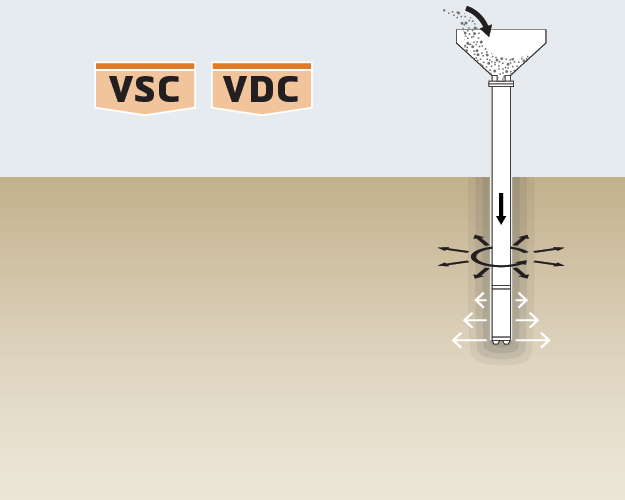
Load rock and drive the vibrolance to design depth.
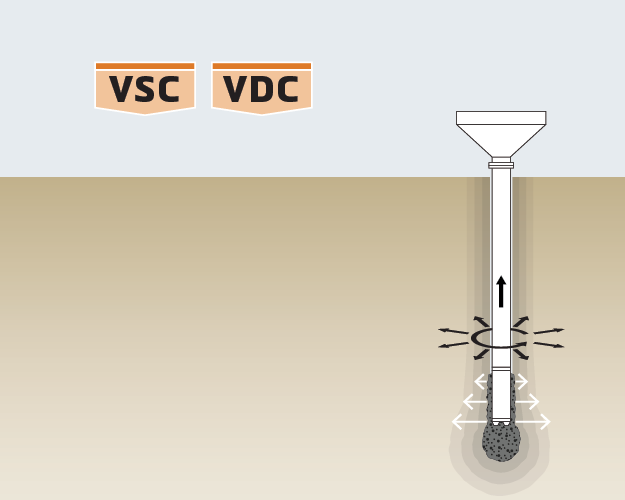
Vibrate rock into ground, lifting and redriving the vibrator.
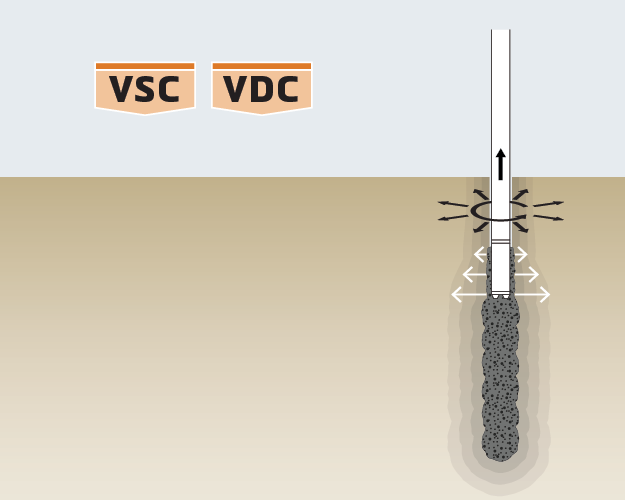
Build VSC/VDC to finish elevation.
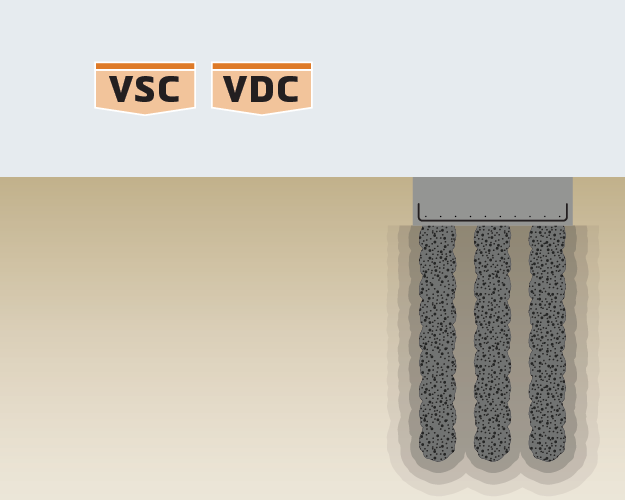
Finished VSC/VDC below footing and/or slab.
Technical Details
Vibro Stone Column and Vibro Displacement Column (VSC/VDC) provide ground densification for liquefaction mitigation and foundation support. The VSC/VDC vibratory tools are shaped to displace and compact sand, aggregate, and select material into the ground to form strong, engineered, “composite ground.” VSC/VDC are constructed with repeated vibro-drive strokes of the vibrator to compact select material into the ground. VSC: vibrolance and vibroflot compactors utilize deep, horizontal, vibration technology to pack loose sand and aggregate more densely at depth. VDC: vibro-rod compactors utilize vertical vibration technology to ram and compact sand and aggregate into the ground. These vibro densification and compaction processes result in coarse sided VSC/VDC with finish diameters greater than 100% of neat tool diameter. The high frequency vibration effect increases the in-place density of loose sand at distances of up to 10 feet from the tool. The diameter of VSC/VDC can be increased with multiple drive strokes resulting in higher densification and soil improvement.
VSC/VDC work best in sandy soil with high ground water. Type 1 VSC/VDC use crushed rock, stone, sand, and soil-cement and grout mixes. Type 2 VSC/VDC include rebar for ductility, higher strength, and to resist tension forces. Full-scale load tests to 200% confirm design bearing capacity. Cone penetration tests confirm soil density between groups of VSC/VDC.
Farrell uses heavy, fixed mast, piling rigs to install VSC/VDC. Farrell operates Leibherr, Casagrande, and Bauer piling rigs. VSC/VDC is commonly installed to depths of 15 to 50 feet. Finished VSC/VDC diameters are typically 18, 24, to 36-inches. The piling rigs are equipped with electronic monitoring systems to record rig crowd force, drive depth, and vibrator frequency.
VSC/VDC are vibratory, displacement, densification, ground improvement systems that support your project to Go Vertical with Confidence®!
Testimonial
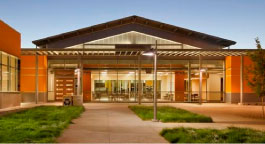
Ironhouse Sanitary District WWTP
Oakley, CA
“This project was particularly challenging with the loose sand conditions to depths of 30 feet. Farrell installed an innovative vibratory, displacement, ground improvement method to improve the density of the sand and increase the bearing capacity of the soil. It worked great.”
Micah Addison
Project Manager
Western Water Constructors
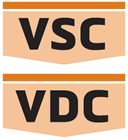
Vibro Stone Column & Vibro Displacement Column
Geologic Hazard Application

Soft/Loose Soil

Liquefaction

Lateral Spread
Diameter/Depth
- 18 – 48 in dia
- 14 – 58 ft deep
Compatible Soils
- Poorly Graded Sand (SP)
- Silty Sand (SM)
- Silt (ML)
- Clayey Sand (SC)
- Undocumented Fill
Bearing Capacity Range
3,000 – 8,000 psf
Key Advantages
- Liquefaction mitigation
- Densification
- CBC/SP117 compliant
- Use for confinement
- Low spoil
- No casing
Key Considerations
- Vibration system
- Requires confinement in liquefiable layers
- Soft clay need grout
- Big operation for small site
- No work next to buildings
Comparable To
- Overex/replace
- Concrete piers
- Driven piles
- Geopier®
- Soil mix columns

